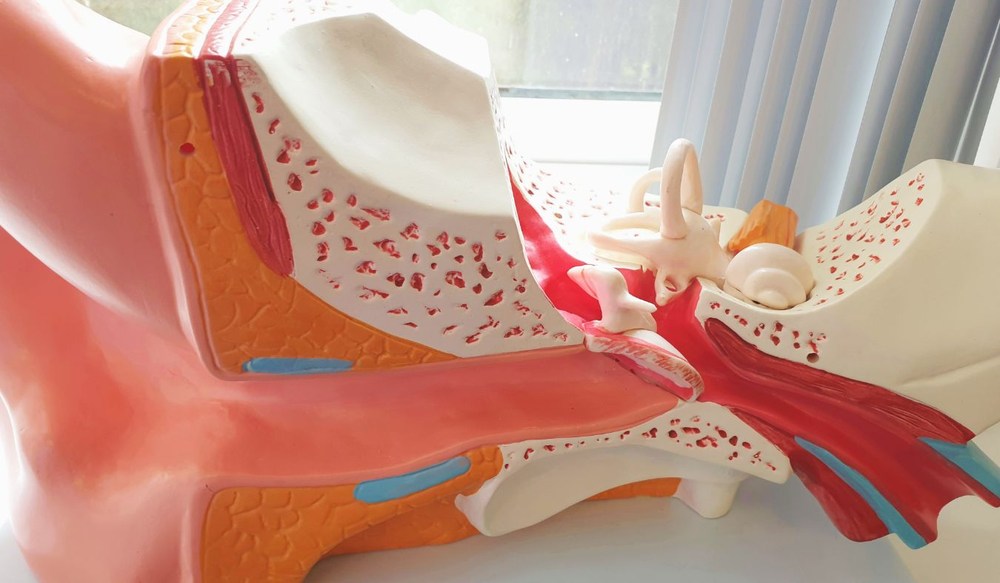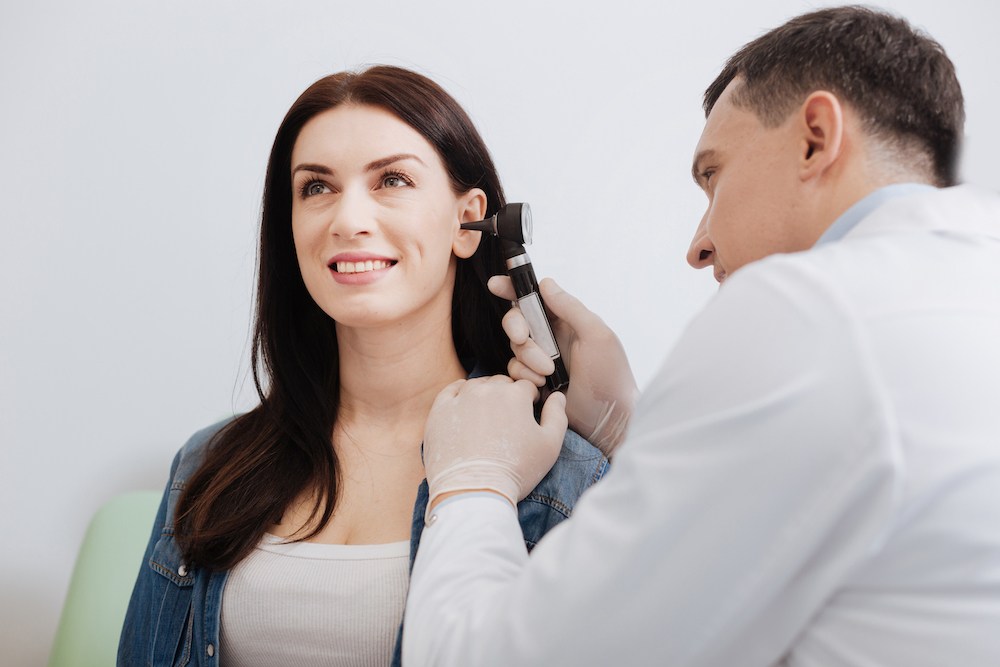The Connection Between Hearing Health and Emotional Well-Being
Your ability to hear clearly affects more than just your ears. It plays a

By: admin | June 20, 2025
Smart watches, fitness bands and health monitors have become routine parts of how we keep track of our wellbeing, giving us instant information about everything from daily activity levels to sleep quality. These devices work quietly in the background, collecting data that helps us understand our health patterns and make informed choices about our care. The same approach is now being applied to hearing health, where wearable devices can provide ongoing insights into how we hear and interact with sound throughout our day.
These advanced wearables do more than amplify sound like traditional hearing aids. They learn from your listening habits, automatically adjust to different environments and can even alert you to important sounds you might miss. Some connect directly to your phone, allowing you to customize settings based on where you are and what you’re doing. This continuous monitoring approach gives you a much clearer picture of your hearing needs than the occasional visit to an audiologist, helping you take a more active role in managing your hearing health on a daily basis.
Wearable technology has come a long way from its early beginnings. The concept can be traced back to the 1960s, when the first wearable computers were created by researchers looking for ways to gain an edge at casino games. These early devices were bulky, limited in function and far from what we’d consider user-friendly today. In the decades that followed, wearable tech saw gradual development through items like calculator watches in the 1980s and fitness trackers in the early 2000s. These devices marked a shift from novelty to utility, offering people small, portable tools that could support daily tasks or track personal data.
As technology advanced, so did the scope and sophistication of wearables. With improvements in battery life, wireless communication and sensor accuracy, wearables have grown into highly functional devices integrated into everyday life. Today’s smartwatches, fitness bands and even smart clothing can monitor heart rate, sleep patterns, oxygen levels and more, often syncing directly with smartphones or cloud-based apps. Many wearables now include AI-based features that provide personalized insights and coaching, adding a layer of adaptability that early models lacked.
Beyond fitness and convenience, wearables have expanded into areas like workplace safety, chronic disease management and even mental health monitoring. The market now includes everything from posture-correcting devices to smart glasses that project information directly in front of your eyes. This evolution reflects a broader trend: wearable technology is no longer just about convenience or novelty. It is increasingly being built to support health, wellness, productivity and connection in ways that were hard to imagine just a few decades ago.
The integration of wearable technology into hearing health has added a new layer of support for people managing hearing changes. These tools are no longer just about counting steps or tracking workouts. Many modern wearables now work alongside hearing aids or offer features that help you stay aware of your sound environment. This shift means hearing care can become more proactive and responsive to your daily surroundings.
Some wearables can monitor noise levels in real time and send alerts if the environment becomes loud enough to pose a risk. This allows you to make quick decisions about moving to quieter spaces or using hearing protection, helping reduce long-term exposure to damaging sounds. It’s a practical way to stay on top of your hearing health without relying solely on occasional checkups.
We’re also seeing technology that works with your hearing profile to fine-tune how sound is delivered. From wearable microphones that boost clarity in group settings to apps that adjust amplification based on where you are, the goal is to make listening easier and more comfortable throughout the day. This kind of integration helps turn hearing care into something that fits more naturally into your routine, rather than something that feels separate or clinical.
Technological advancements have made personalizing your auditory experience easier than ever. With smart devices, you can now adjust and control your hearing aids to suit your specific needs and preferences.
This level of customization goes beyond simple volume control. Imagine being able to adjust settings based on different environments, like reducing background noise in a busy restaurant or enhancing speech clarity during an important meeting. Smart devices offer these options and more, granting you the freedom to modify sound settings according to various situations. These features not only better your listening experience but also improve communication, making interactions more seamless and enjoyable.
Hearing aids have come a long way from their earliest forms. In the 17th and 18th centuries, devices like ear trumpets and speaking tubes were some of the only options available. These tools collected sound and funneled it into the ear without any electronic amplification. They were often large, awkward and not especially effective, but for their time, they provided a basic form of support. As technology advanced in the early 20th century, hearing aids became electronic and began using vacuum tubes, making them somewhat more powerful but still quite bulky. These early electric models often had to be worn around the neck or kept in a pocket, with wires running to an earpiece.
The introduction of the transistor in the 1950s was a turning point. It allowed devices to become smaller, more reliable and portable. Over the following decades, hearing aids continued to shrink and improve in sound quality, especially with the arrival of digital signal processing in the 1990s. That shift allowed for more precise control of amplification, better feedback reduction and improved background noise handling. Devices could now be tuned more specifically to the individual user’s hearing profile, opening up a wider range of sound environments that could be comfortably navigated.
In more recent years, hearing aids have evolved into smart devices. Many models now offer wireless connectivity to phones and tablets, directional microphones, rechargeable batteries and environmental sound adaptation. Some can even be adjusted remotely by a specialist through telehealth platforms. These modern devices no longer serve just one function. They can monitor your listening habits, help protect your hearing and allow for a more seamless experience when switching between settings like a crowded restaurant or a quiet living room.
Wearable technology has opened up new avenues in telehealth services, shifting the way hearing health care is delivered. This advancement is particularly noteworthy in a world where remote healthcare has become increasingly vital.
For example, you can now conduct remote hearing tests using wearable devices. This means that you can have your hearing evaluated without having to visit a clinic. All it takes is a simple device and an internet connection! This not only saves time and minimizes travel-related stress but also makes regular check-ups more convenient and accessible.
Wearables enable real-time communication between you and your audiologist. Imagine adjusting your device settings or troubleshooting minor issues with guidance from an audiologist, all from the comfort of your home! This ensures prompt assistance and improves the overall quality of care received.
Bluetooth-enabled hearing aids can connect directly to your favorite devices, whether it’s your smartphone, television or car audio system. This makes it possible to stream audio straight into your ears without the need for additional attachments. If you enjoy listening to a podcast while walking or want better sound clarity from your TV without increasing the volume for everyone else, Bluetooth makes these tasks simple and convenient. You get direct access to the media you use every day in a way that’s clear and tailored to your hearing needs.
Beyond convenience, this type of connectivity is also changing how hearing aids function as wearable technology. Many Bluetooth-enabled devices can sync with health and fitness apps, contributing to broader data collection. For example, some hearing aids can track usage patterns and environmental sound exposure, which can then be reviewed by you or your audiologist to make personalized adjustments. This use of real-time data helps fine-tune performance based on your actual lifestyle.
The same connectivity that lets you take a hands-free phone call or use voice commands can also make hearing care more responsive and tailored to your routine. Bluetooth isn’t just about ease of use, it also supports smarter hearing health by linking your devices to a wider network of tools that monitor, manage and improve your day-to-day listening experience.
When you’re selecting hearing aids, it’s important to have an open and informed conversation with your audiologist. Start by asking about the different styles of hearing aids and how each one fits into your daily life. Some styles are better suited for mild hearing loss, while others offer more power for more severe hearing challenges. You’ll want to think about how visible or discreet you want your devices to be, as well as whether you wear glasses, use oxygen or have dexterity concerns that could influence comfort and usability. Your audiologist can walk you through these considerations to help match you with the right fit.
It’s also helpful to ask about which features would be most beneficial for your lifestyle. For example, do you spend a lot of time in noisy environments or on the phone? Would Bluetooth connectivity make it easier to stream audio from your devices? What about rechargeable batteries versus traditional ones? Hearing aids now come with a wide range of technology options, from automatic sound adjustments to directional microphones to tinnitus support. Understanding which features actually support your needs can help you avoid overpaying for things you won’t use while making sure you don’t miss out on tools that could make everyday listening easier.
Another good topic to cover is how hearing aids may integrate with other wearable tech or smart home devices. If you already use a smartwatch, fitness tracker or voice assistant, your audiologist can explain which hearing aids are compatible and how they might work together. You should also ask about follow-up care, trial periods and whether there are options to upgrade or adjust your devices in the future. The more you understand going in, the better positioned you’ll be to make choices that fit both your hearing needs and your everyday routine.
As more wearable devices are integrated into hearing care, we’re seeing real benefits in how people can track and respond to their hearing needs. Instead of relying only on periodic appointments, you now have access to helpful data and adjustments in real time. This means less guesswork, better performance in different listening environments and more control over your hearing experience. Whether you’re at work, out with friends or relaxing at home, today’s hearing technology is built to support you throughout your entire day.
At Rocky Mountain Hearing & Balance in Murray, UT, we’re here to help you make the most of these new tools. If you have questions about how hearing wearables work or want to know which technology fits your needs, give us a call at (801) 685-3456. We can walk you through your options and help you find the solution that fits your daily routine and hearing goals.

Your ability to hear clearly affects more than just your ears. It plays a
By: admin | October 20, 2025

People from different cultural backgrounds often have unique perspectives
By: admin | July 29, 2025

Smart watches, fitness bands and health monitors have become routine parts
By: admin | June 20, 2025
